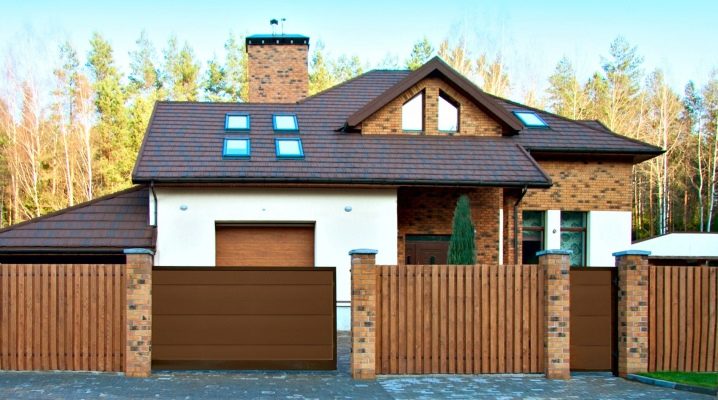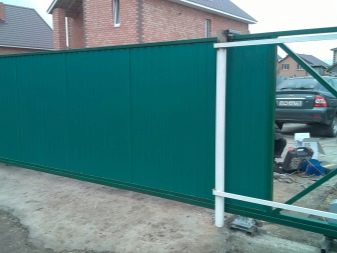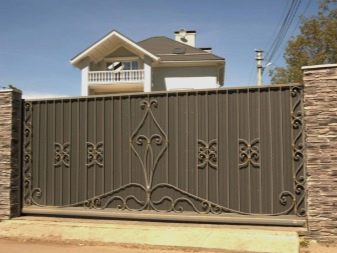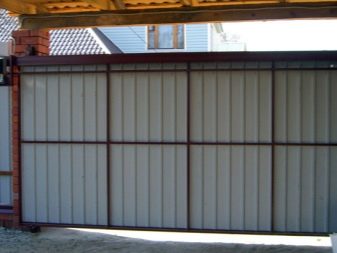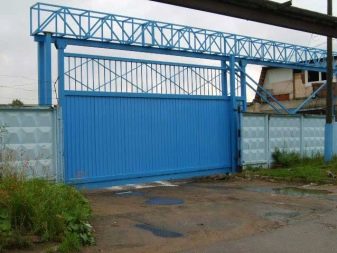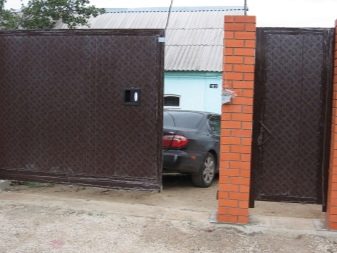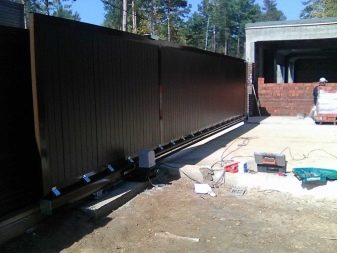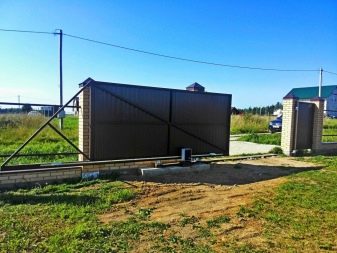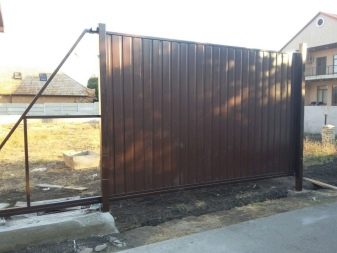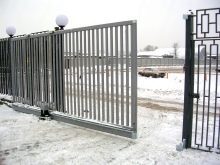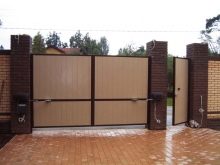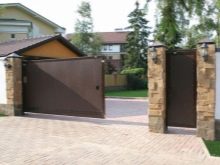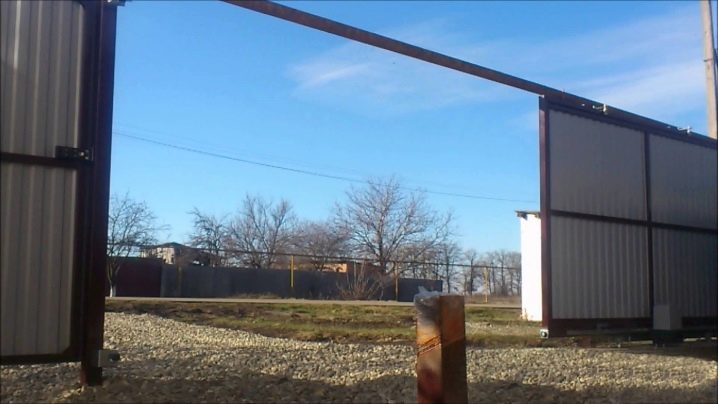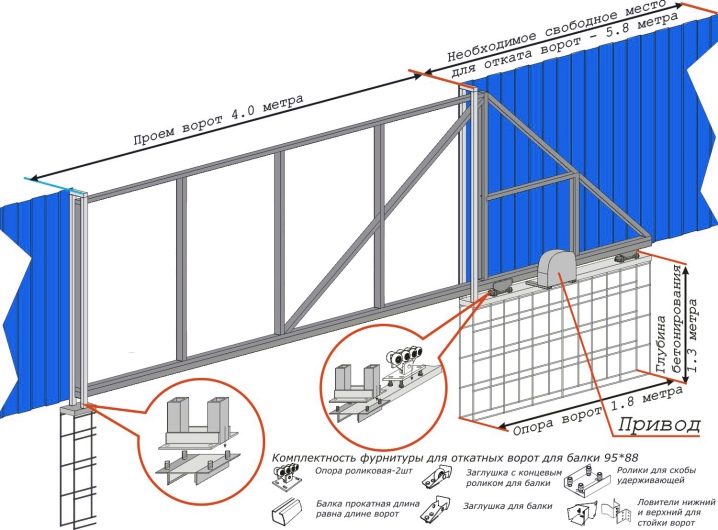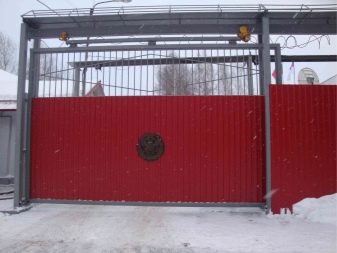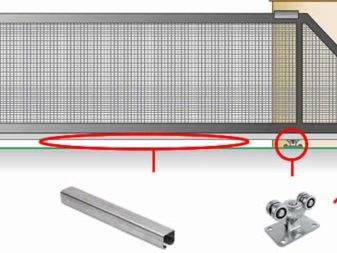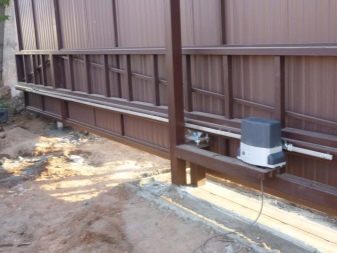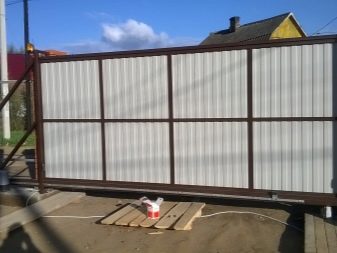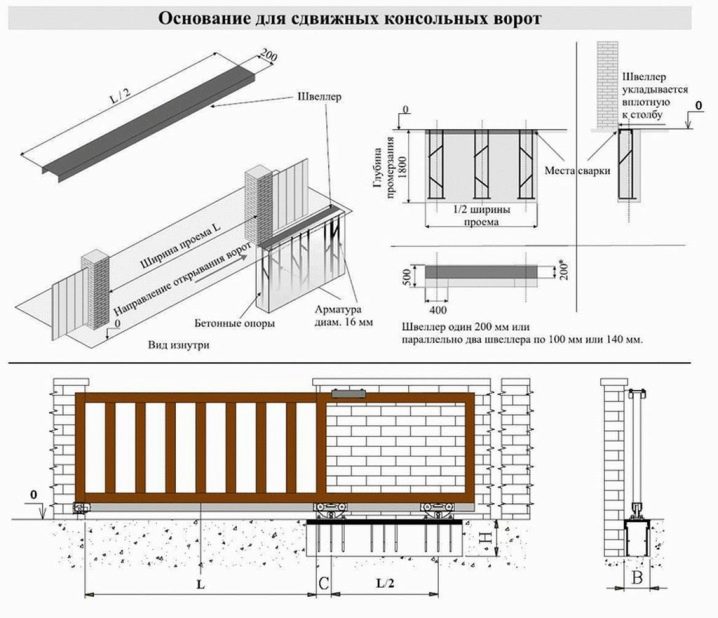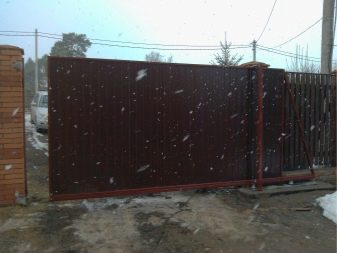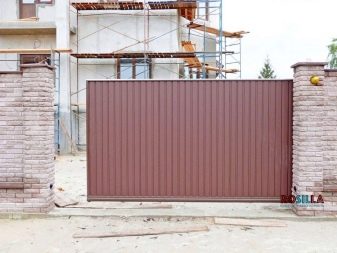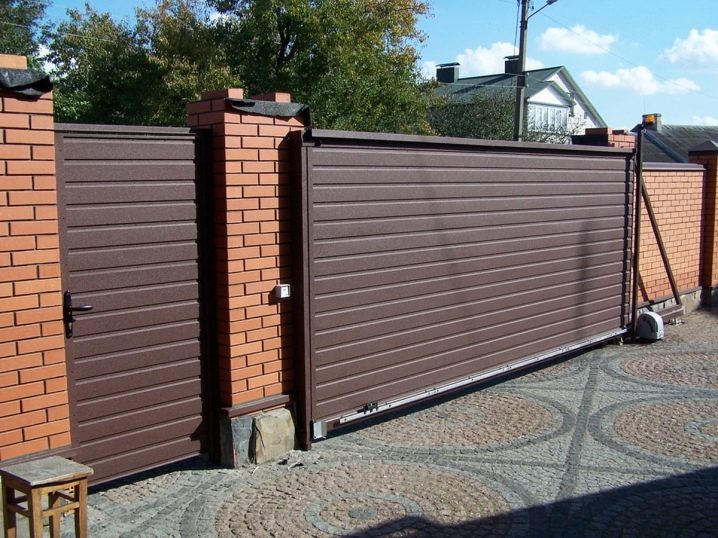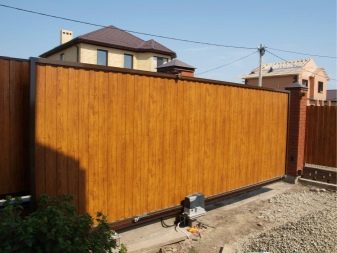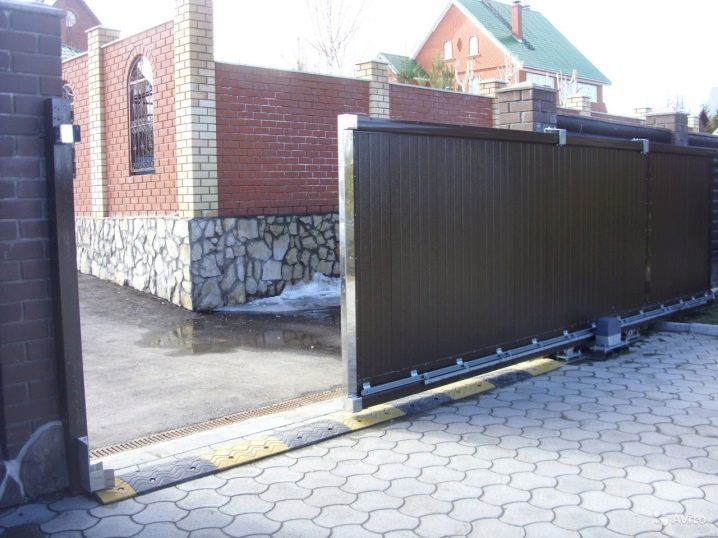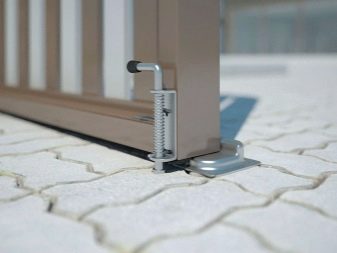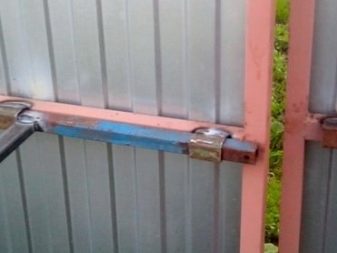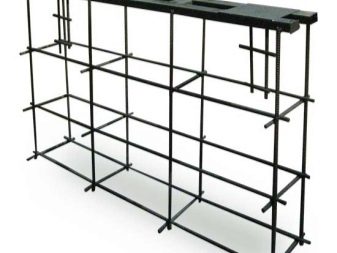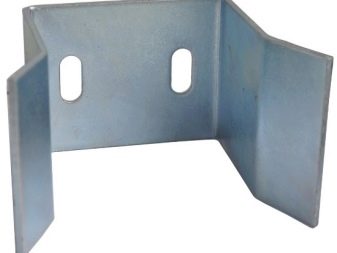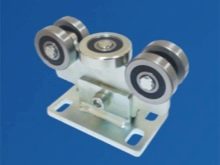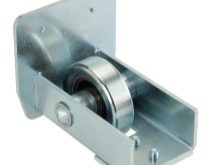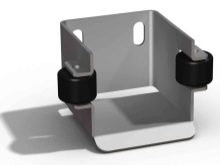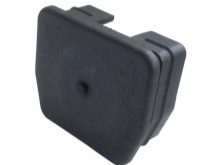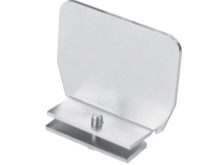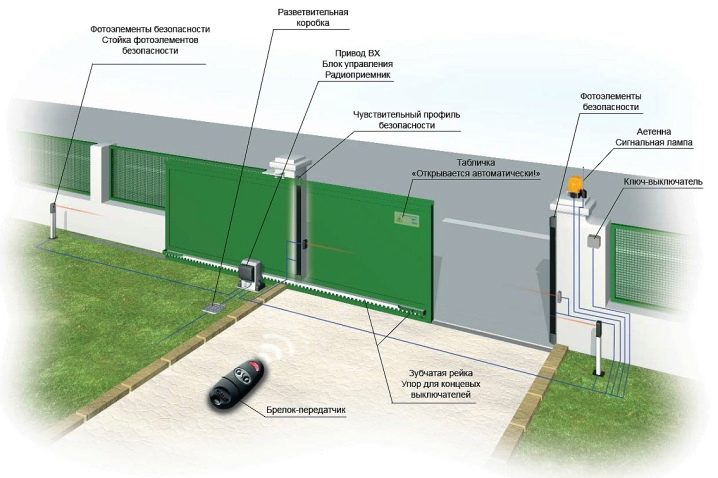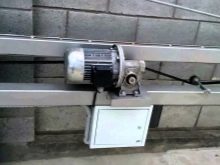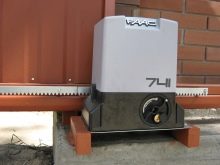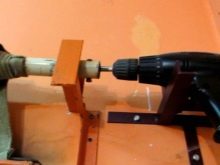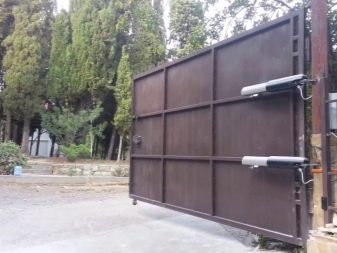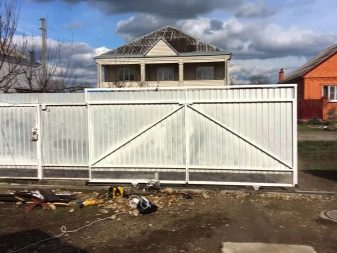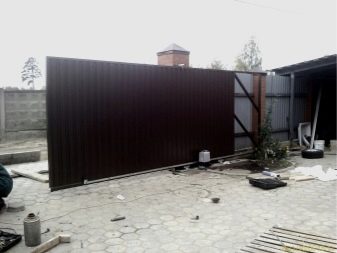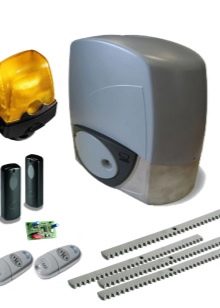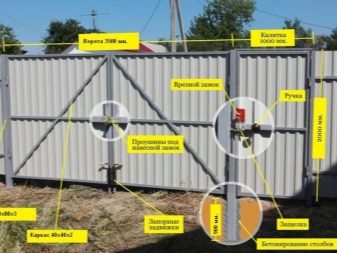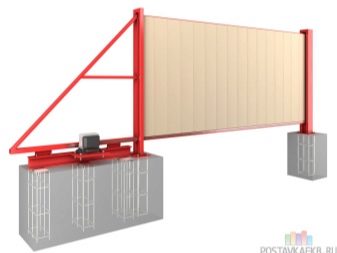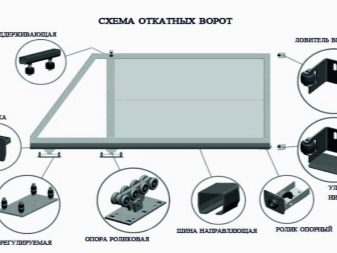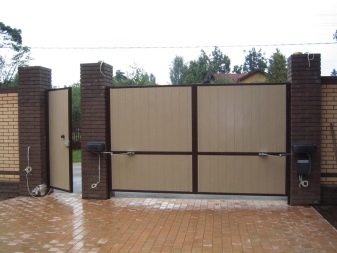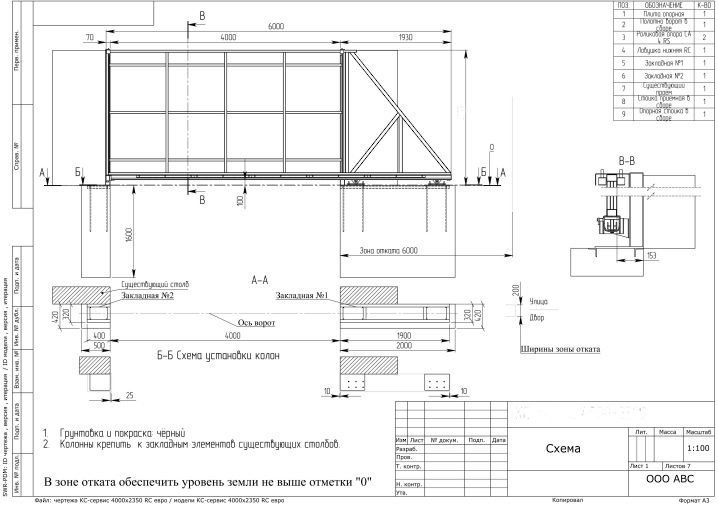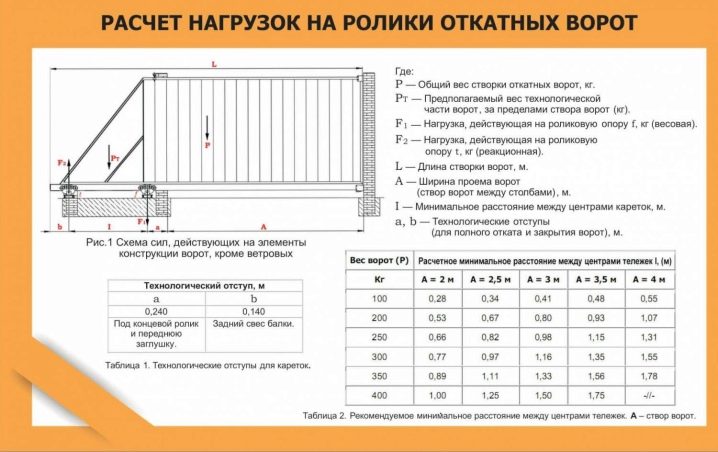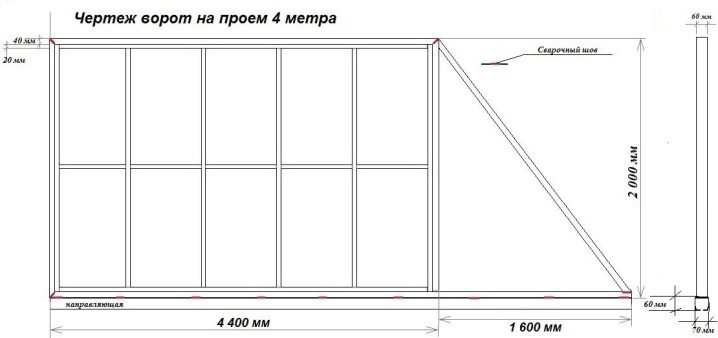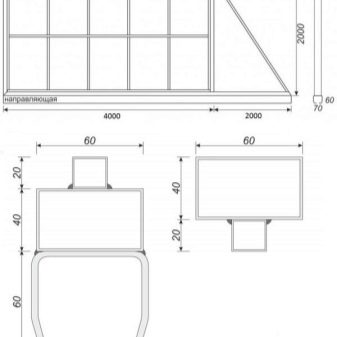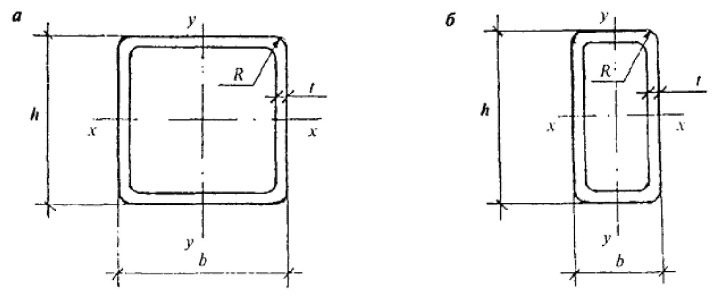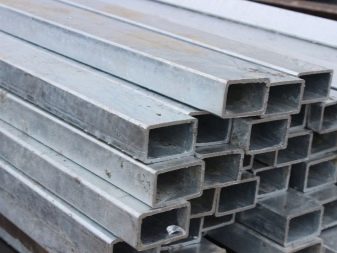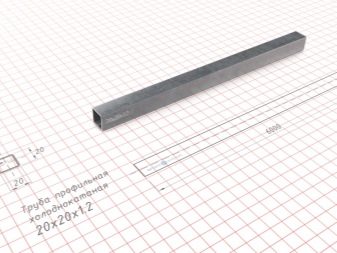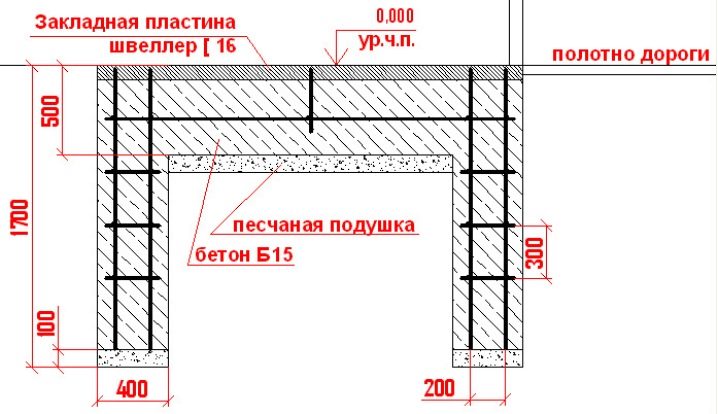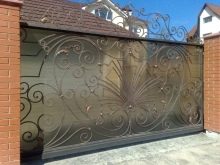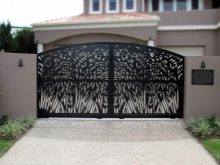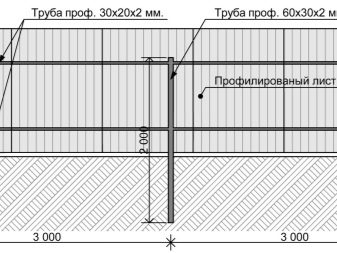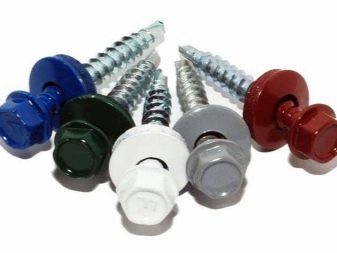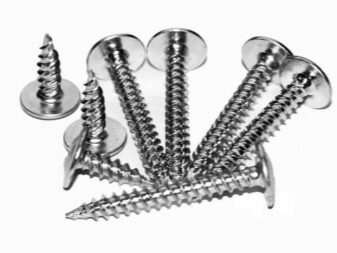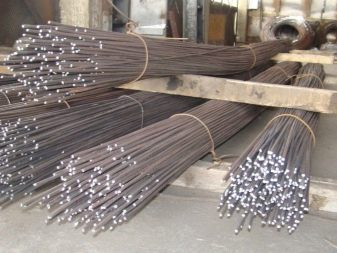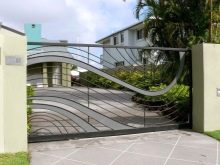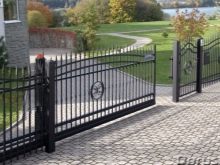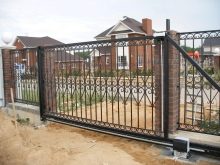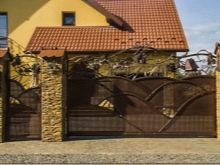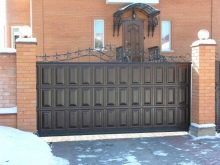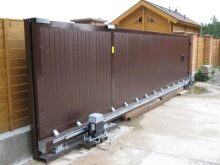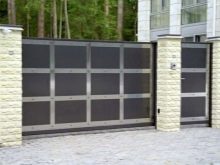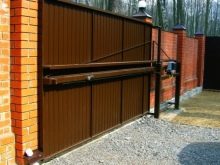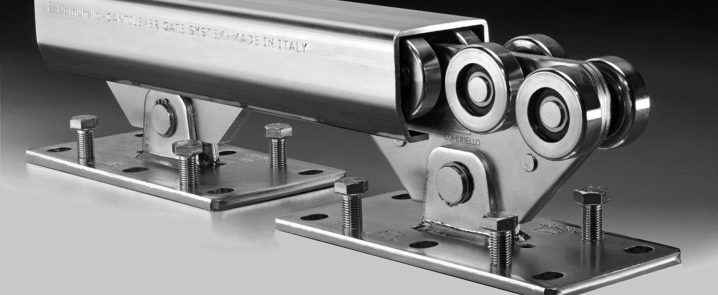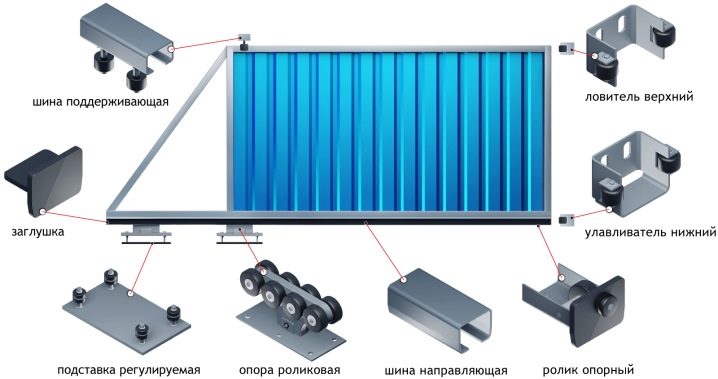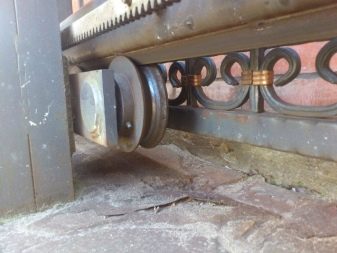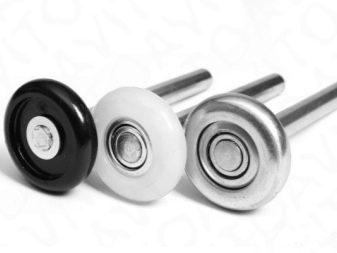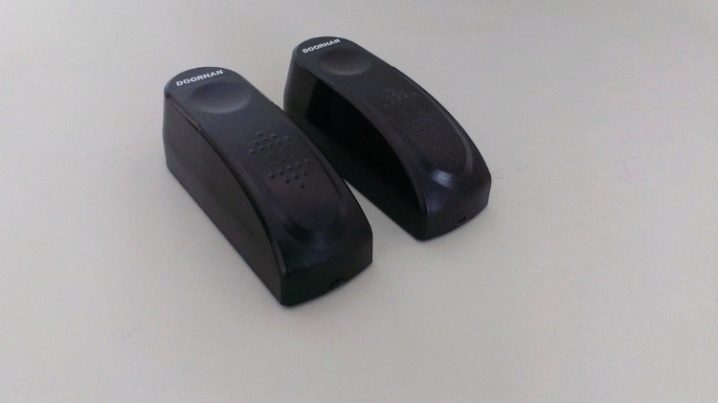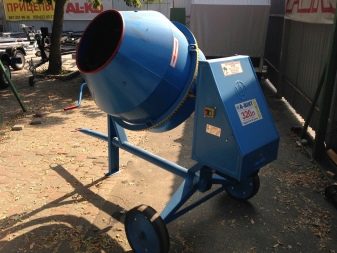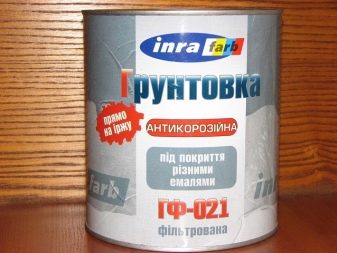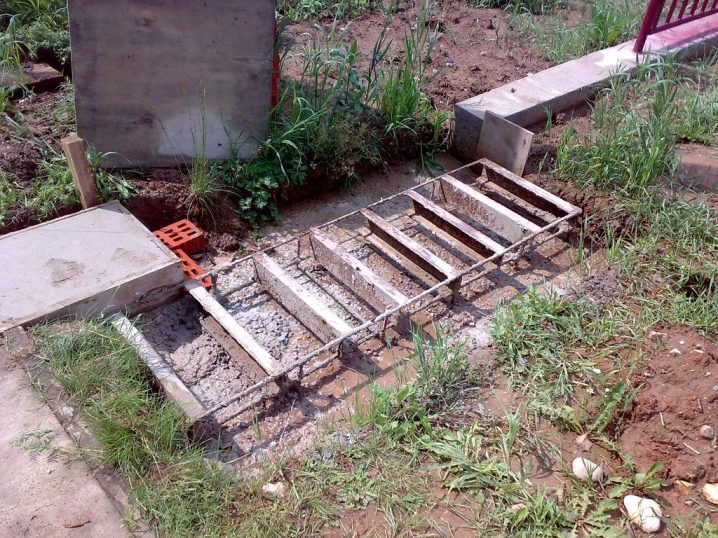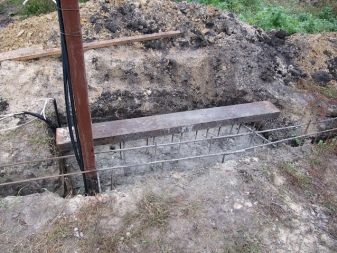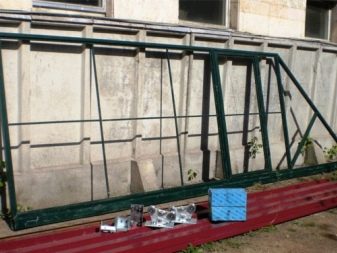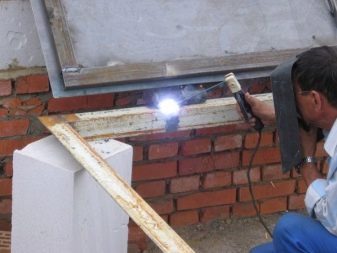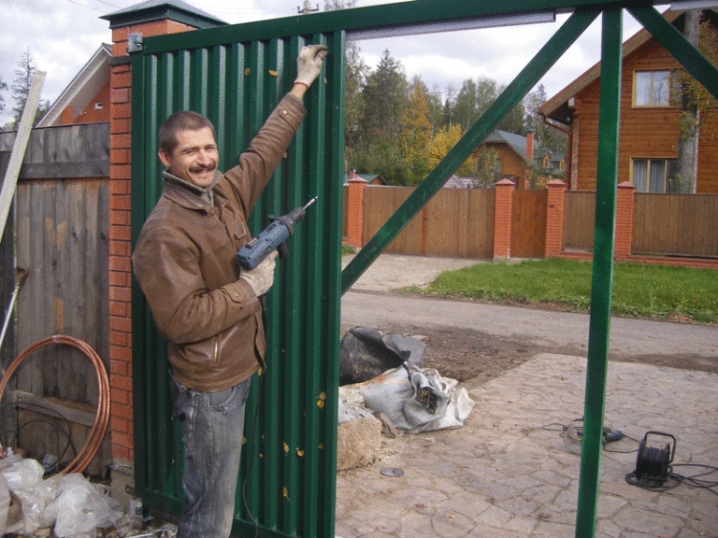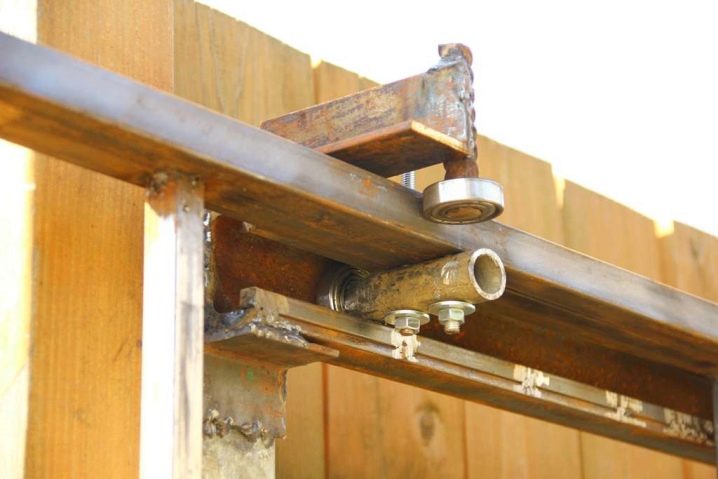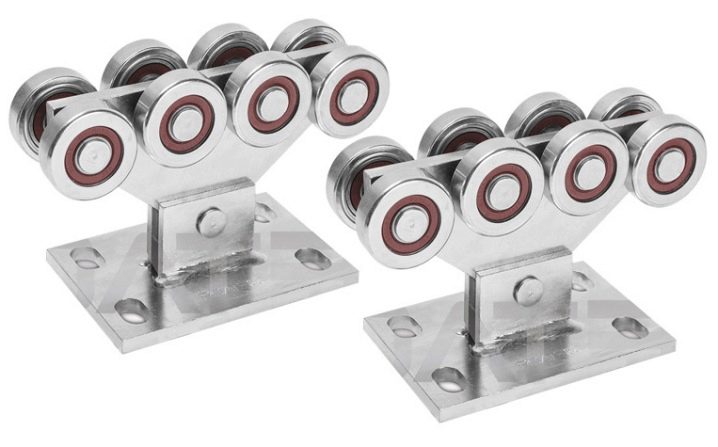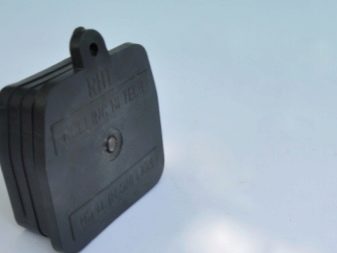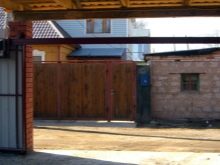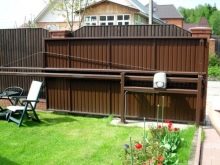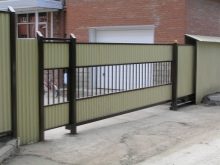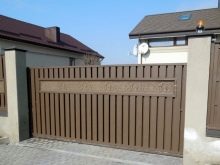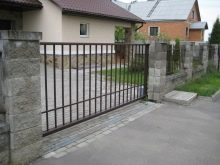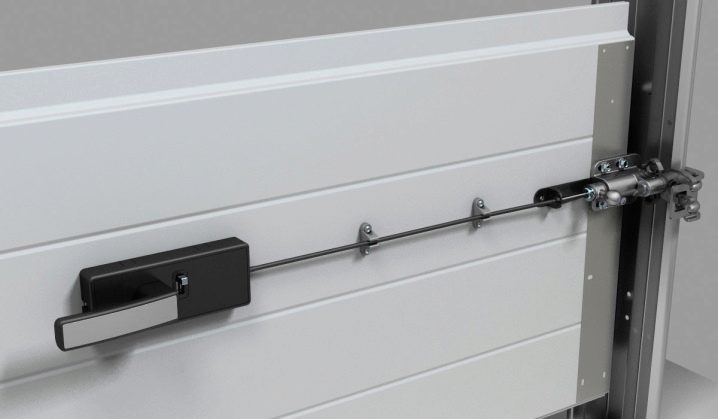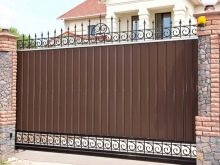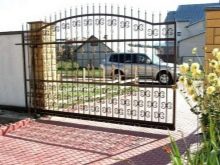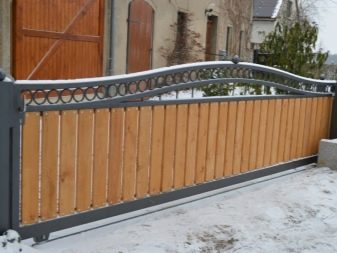How to make a sliding gate with your own hands?
Retractable gates, which until recently were a luxury item and cost a lot of money, are gradually entering the market for the average consumer. Ease of use and space saving fully justify the investment. There are a huge number of offers of finished designs from various domestic and foreign manufacturers. Many companies provide services for the manufacture and installation of such gates.
But if you have even a little experience with a welding machine and minimal skills in construction, it will not be difficult to make such a structure with your own hands, thereby saving a decent amount of money.
Special features
Sliding gates began to actively use more than 50 years ago.At first they could be seen mainly at the entrance to large industrial and warehouse areas. Over time, the design and accessories improved and became more accessible and easier to install. Gradually, various options for sliding gates began to be installed in private territories, and today they are not uncommon for the dacha.
Unlike lifting and hinged structures, sliding gates have many more advantages:
- Compactness. This is especially true in cases where travel between neighboring sites and a place in the yard is limited. Also, the sliding door almost eliminates the possibility of damage to the car sash.
- Durability. The main disadvantage of swing gates is the presence of hinges that are liable to sag under the weight of the doors. Sliding gates of such problems are absent due to the uniform distribution of the weight of the structure on roller bearings.
- Vzlomostoykost. Properly designed and manufactured system can withstand heavy transport ram.
- Protection against sail. Even heavy wind gusts do not cause damage to such structures.
- Availability of automatic drives.Motor and components of automatic sliding gates are cheaper than equipment installed on swing and lifting structures.
- In winter, no snow clearance is required before opening the sash.
Despite all these advantages, before proceeding to the manufacture and installation of gates, it is necessary to take into account many other factors.
First you need to calculate the width of the span to enter the car. Usually for the private sector it is recommended an aperture equal to 4 meters: both passenger and cargo transport can freely enter it. If necessary, the width of the entrance can be reduced to 3 or increased to 6 meters or more.
The free space along the fence on the rolling back side of the sash should correspond to:
- for suspended and wheel types of designs - the width of the canvas,
- for console gates - 40-50% more than the width of the sash.
The space at a distance of 40-50 cm from the fence should be left free. The ground relief should be as flat as possible, without strong drops, so that there are no obstacles in the direction of the lower beam.
If you study the instructions in detail, prepare high-quality materials and tools, in a short time you can make strong and beautiful gates with an individual design.
Types of construction
The main difference between the types of sliding structures between them is the way the rollers move when opening and closing the gate. In each of the varieties, special roller mechanisms are used, but they are installed differently.
Suspended design
Door leaf moves on roller carts located on the support beam, which is mounted on poles at the top of the passage. This is the most durable and wear-resistant option. The beam can withstand quite a lot of weight, so any materials can be used for facing the gate, and the width of the casement is practically unlimited. The disadvantage is that the passage of a high car may be limited to the supporting beam.
Suspended structures are most often installed on production sites. To increase the space for travel, the beam is attached to high support posts. This greatly increases the metal consumption and the cost of the whole structure, so this option is rarely considered for the private sector.
The photo shows an example of suspended sliding gates at the entrance to the production.
But if the height of entry into the territory of a private house is initially limited to decorative or other structural elements, the suspended gates will fit perfectly.
Rail type design
This type of sliding gate is the easiest to manufacture and install. The supporting part is the so-called rail, on which the sash moves on a special roller. The rail is installed along the line of movement of the gate on the same level as the roadway, so as not to interfere with the passage of vehicles. The maximum span between the fence posts can be 6 meters.
It is not recommended to install rail structures in regions where snow drifts frequently occur.
Snow can get clogged and form frost on the rail, preventing proper operation of the entire structure. In addition, it requires constant cleaning of sand and dirt.
The foundation holding the main rail must be stable, without chipping and cracking, otherwise the gate can be deformed and quickly become unusable. The rail type of the gate is usually used at summer houses and houses that are visited only during the summer period.
Console type design
This type is the most common variant of sliding gates, which is a sash with a counterweight mounted on console blocks. The lack of contact of the lower carrier beam with the roadway is the main advantage of this design. Due to this, weather problems are almost completely excluded.
Among the shortcomings can be identified a long process of pouring the foundation for mortgage and the complexity of installing the console. The total length of the structure is 50% larger than the gate leaf, which makes it impossible to install it with a large opening and an insufficient width of the section.
Such gates can be made with a built-in wicket, but this is not always convenient. Since the canvas is raised from the ground by about 8-10 cm, the threshold of such a gate may be difficult for the passage of young children and the elderly.
It is easier to use and aesthetically pleasing to see a separate gate, which settles close to the gate - in a place where there is no roll back.
All three types of roll-out structures can be made mechanical or automatic. Mechanical gates are opened and closed manually, while automatic gates are controlled by a remote control and set in motion with the help of a special motor.Automation, if desired, can be installed a little later, during the operation period, using the services of specialists.
The main labor costs are in the manufacture and installation of the door leaf. Sheathing is one-sided and two-sided. Appearance from the entrance is no different.
Principle of operation
Console-type gates are best suited for regions with changing weather conditions. Their production, installation and maintenance do not require unnecessary financial costs. For self-manufacturing structures, first of all you need to figure out what principle it works.
The device of console sliding gates is quite simple:
- Cloth gate. The main frame with the inner frame welded to it and the counterweight are mounted on the bearing lower beam. Facing the fence, which is most often done with the use of corrugated sheets, mounted on the frame from one or two sides.
- Mortgage. Channel, firmly welded to the reinforcement cage and filled with the foundation level of the soil. This is one of the most important parts of the design, on which cantilever blocks and automation are installed.The durability of the entire structure of the fence depends on the quality of the foundation.
- Console blocks. Special roller support mechanisms that are attached by welding to the channel and installed in the carrier bottom beam. The console part is the main component of the whole structure, which accounts for all the loads. It depends on how smoothly and freely the canvas will move, so you need to approach the setting of the console blocks very carefully.
- Catchers. The lower and upper catchers are mounted on a support pole, located opposite the foundation for roller bearings. When closing the gate in the lower catcher drives in the end roller, which is located on the end of the carrier beam. The canvas is lifted by 5 mm, due to this, the load on the console blocks is removed. The upper catcher is needed in order to firmly fix the gate, and to prevent windage - swinging the gate in strong winds.
- Top fixing holder with rollers. It is installed on the support pole above the cantilever blocks and prevents the gate from swinging and tilting during movement.
- Automatic drive. Drive selection mainly depends on the weight of the structure and the weather conditions in the region. Installation is performed according to the instructions that are attached to the equipment.
Automation
Retractable design is convenient in itself, but if you equip it with an electric drive, you do not need to leave the car each time to open or close the gate. Experts advise to install special drives, but at your own risk and risk such a mechanism can be made independently.
To do this, use a suitable power engine and gearbox. There are precedents when a screwdriver was used as an engine. Also, if the weight of the blade is small, it is possible to install a cheaper drive for garage doors.
Special drives must be selected based on the weight of the structure:
- For gates weighing 250-300 kg, a drive of 200-250 W will be suitable.
- For the weight of 500-600 kg - a suitable power of 350-400 watts.
- For 800-1000 kg - 500-600 watts.
When choosing automation, you should always take a small margin of power. And in regions with severe winters, it should be increased by at least 20-30%, so that the motor worked without interruptions during sudden temperature changes.It is possible to install the drive only when all the work for the manufacture and installation of the structure has been completed. The gate leaf should move easily, without jumps and rocking. Incorrectly installed canvas can damage and damage the automation.
Automatic drives can be selected from a variety of proposals of domestic and foreign manufacturers. Pay attention to such details as gears in the gearbox.
They can be plastic or metal. Metal gears are more expensive, but much more durable, so it’s best to prefer them.
Also it is worthwhile to carefully consider the selection of the limit switch. Its magnetic version costs a little more, but unlike the metal one in winter, it does not stick and works smoothly. For ease of use, there are various additional functions: temperature control of the electric drive, adjustment of the speed of movement of the sash, backup power supply, photo cells for entry and exit, wicket mode.
Among manufacturers of drives for roll-out constructions, the following can be mentioned: Russian Doorhan, Belarusian An-Motors, Italian BFT, Faac and Nice, French Came, Chinese PS-IZ and Miller, as well as other manufacturers.Their line of proposals is quite large, it remains only to pick up the right equipment and you can proceed with the installation.
Consider a set of automation on the example of the scheme above:
- drive unit;
- photo cells at the exit;
- photo cells on entry;
- signal lamp;
- radio control antenna;
- key button;
- rail;
- plates of limit switches;
- remote control.
To work you will need an inverter apparatus for welding with electrodes and a drill with drills for metal. Initially on the channel between the carriages you need to prepare and mark the area for mounting the drive. The equipment is attached to the base, which comes complete with automation, and a gear rack is installed in the center of the motor gear.
After recreating the working position, you need to weld the base to the channel. If the electric drive needs to be raised, then a profile pipe of a suitable size can be additionally welded between the base and the channel.
After the drive is bolted to the base, you need to re-install the toothed rack on the motor gear, mark the correct position on the profile or beam with a marker and carefully grab it by welding.Before completely weld the seam between the rail and the beam, you need to check once again the correctness of its installation.
The gates must be fully open when working with the welding machine. At the end of all actions with the help of bolts and nuts with flanges, limit switches are screwed to the rail. Further, according to the instructions, the installation of photocells, a signal lamp, an antenna and a key-button is performed.
The electric drive can be installed not only in the lower, but also in the middle or in the upper parts of the gate.
This method of summing up automation is somewhat more difficult, but in cases of heavy snowfall, it will not be necessary to clean the basement area daily from precipitation.
In this case, you will need to adjust the drawing for the desired design.
The profile to which the rack will be mounted will be located on the middle or upper level of the sliding gates, respectively. To fasten the automatics, it will be necessary to build on an additional structure made from a metal profile of rectangular section 60x40 mm.
Instead of a special electric drive, you can install a homemade drive made from scrap materials.Taking into account the mains voltage on the site is set three-phase or single-phase motor. The three-phase drive is more powerful and virtually eliminates the problems at the start of the movement. In accordance with the weight of the door leaf, an engine with a power of 1.5 to 2.5 kW is needed. At the same time, a small engine speed gives less load to the drive shaft.
It is better to choose a drive with 12 poles and a rotational speed of 500 revolutions per minute or with 6 poles and a frequency of 1000 revolutions per minute. The drive can be purchased in specialized stores, or use spare parts from an old car or a washing machine.
The incoming torque of the gearbox must correspond to the rotational speed of the drive. The frequency of the output torque of the drive wheel should be in the range of 80-100 revolutions per minute. It will be more convenient to use a single-stage gearbox. It is connected to the motor shaft using a rigid or semi-rigid coupling.
Features of calculations
Before proceeding with the design of the drawing, you need to do all the necessary calculations. The height and width of the gate are calculated first. If you know the height of the fence on the site,you can determine the height of the future canvas as follows: the upper part should be at the same level with the fence, and the lower part 8-10 cm above the roadway. The width of the gate is equal to the distance between the support beams, the recommended value is 4 meters.
To calculate the counterweight is also quite simple - its length should be equal to 50% of the length of the opening. This value can be reduced to 40% only in those cases when there is not enough space for the fence to fully open the sash and the canvas is sheathed with lightweight materials.
The length of the profile of the counterweight connecting the top of the canvas and the edge of the lower profile should be enough to form a triangle.
The value is calculated according to the dimensions using the following formula:
sqrt {func a ^ {2} + func b ^ {2}}
Or in a more familiar form, familiar from school
Where a is the length of the counterweight, b is the height of the web, c is the desired length.
Calculation of the weight of the structure is needed for the proper selection of the guide beam, accessories and automation. Basically, the weight depends on the material to be trimmed, on the weight of the frame, the frame and the carrier beam and on the wind load.
If 1 square. m profile sheet weighs 4 kg, then steel sheet 2 mm thick weighs 17 kg. Weight forged, wood and other skins is calculated individually.On average, the gate with a canvas 4x2 m, sheathed profile will weigh about 200 kg.
For gates weighing up to 300 kg, a carrier beam with dimensions of 9x5 cm and a metal thickness of 3.5 mm is suitable. Fittings must withstand the full weight of the structure. It can be purchased ready-made kit or purchase all components separately. When buying, it is advisable to carry with you a drawing with all the calculations so that you can consult with a specialist.
Drawing Design
The scheme or drawing of the sliding gate is done after all measurements have been taken. A drawing with all the calculations is ordered in specialized firms. You can find ready-made sketches on the Internet, make them yourself or use the following. For structures with a span of 4 meters, you can choose one of two submitted drawings.
In the first case, the power frame is 10% larger than the opening, which increases the consumption of facing material. At the same time, the cost of the whole structure does not increase much, however, there is no expediency in such an increase in spending. Therefore, we consider the second drawing, all calculations will be made on the basis of it.
In the drawing, all dimensions, welding points and fixings must be clearly indicated. Fastening the toothed rack is possible both to the carrier beam and to the lower profile of the frame.
For light gates sheathed with a profile width of 4 meters and a height of 2 meters will need:
- Support beam, which is a rail, the upper part of which is solid, and in the lower part there is a longitudinal cutout. It is better to choose a structure from cold-rolled steel. The beam is installed on the console blocks and moves on the carrier rollers. The size of the rail in this case, 60x70 mm, the required length of 6 meters.
- For the power frame, you need a profile of rectangular section 60x40 mm and metal thickness 2 mm in segments:
- 1 length of 4 meters;
- 1 segment - 6 meters;
- 2 pieces - approximately 2 meters;
- 1 segment - about 2.8 meters.
Total will need almost 17 meters of such a profile.
- For the frame, a rectangular section profile of 20x20 mm or 30x20 mm with a metal thickness of 2 mm is suitable. In total, you need about 24 meters of profile.
- A mortgage bar will require a width of 20-40 cm and a length equal to ½ of the gate opening: in this case, 2 meters. The thickness of the metal must be at least 3 mm. The cantilever blocks and the electric drive mechanism will be mounted on the channel, welded.
- The foundation framework requires at least 15–20 meters of reinforcement with a cross section of 12–16 mm.
The thickness and dimensions of each part of the drawing are directly dependent on the material to be used for the casement paneling.
If the veneer is made of a profiled sheet or polycarbonate, the components indicated above are sufficient.
If sheathing with steel sheets or forging is planned, more durable elements will be needed. After preparing the drawing and calculating the exact dimensions of all its components, you can proceed to the purchase of materials and the manufacture of the gate.
Materials
To make simple 4x2 meter gates with profiled sheeting, you need to purchase the following materials:
- profile of rectangular section 60x40 mm for the power frame and 20x20 or 30x20 mm for the frame;
- guide rail 60x70 mm;
- professional flooring 8-10 square meters. m;
- rivets or screws for fastening the casing in the amount of about 200 pieces;
- channel 40x200 cm;
- reinforcing rods 15 meters.
Forged elements themselves are the inner frame of the gate and are attached to the power frame by welding. Such doors do not require additional plating, except as a design solution.
Accessories can be purchased both separately and as a special ready-made kit. Well-established manufacturers of accessories for sliding gates, such as:
- Italian - Combi Arialdo and Flatelli Comunello;
- Russian - Roltek and Doorhan;
- Belousu Alutech.
Independent production of roller components is impractical because it requires special skills and tools. For installation of cantilever doors, the following fittings will be required:
- Roller supports - 2 pcs. They are also called console blocks or carriages. It is recommended to use designs with bearings.
- Upper catcher - 1 pc. It is better to use catchers with guide wheels. It is possible to manufacture homemade catchers.
- Lower catcher - 1 pc.
- Upper clamp - 1-2 pcs.
- Trailer roller - 1 pc.
- Plugs on the carrier beam - 2 pcs.
The wheels in the support and end rollers can be either metal or plastic. In this case, the metal parts are more durable, but they emit noise when the door leaf moves. Plastic will serve a little less, and with proper operation, the same, but such gates will move quietly.
For fixing catchers and upper locking pins, metal columns from a rectangular section 60x40 mm are needed. They are installed on the foundation reinforced with reinforcement to a depth greater than the freezing of the soil.
If the mount is made on brick or reinforced concrete supports, then their size must be at least 20x20 cm.
Metal mortgages are fastened to the pillars with anchor bolts, to which the upper retainer and counter pole from a 30x20 mm profile pipe will be welded. Instead of anchors, reinforcement rods can be removed from the pillars and attach mortgages to them.
Fastening photocells on entry is performed on pipes of rectangular or circular cross section with a diameter of at least 30 mm. The height of the pipes should not exceed 1 meter. Their installation must also be made on the foundation, but without reinforcement reinforcement. Photo cells at the exit are installed on the support pillars.
Manufacturing
To make your own sliding gates The following tools are needed:
- inverter welding machine and electrodes;
- riveter or screwdriver;
- Bulgarian with interchangeable discs for cutting and grinding;
- concrete mixer, shovel or rod for concrete;
- marker, tape measure, hammer, pliers, drill, construction or laser level;
- airbrush or air compressor for applying primer and paint. You can use brushes and rollers, but then the layer will be thicker and non-uniform;
- protective equipment for eyes, respiratory tract and hands.
You will also need a corrosion-resistant primer, acetone or other solvent, alkyd or acrylic paint for outdoor use.
The step-by-step instructions for the manufacture and installation of sliding gates give information on how to do all the work with your own hands:
At the initial stage, a foundation should be made for the mortgage and, if necessary, for the supporting pillars. Under the mortgage is laid out and dug a hole to the depth of soil freezing. Depending on the region, it can be from 1 to 2 m. The length of the foundation is ½ of the width of the opening, in this case 2 meters. The width of the pit is 40-50 cm. Depending on the depth of the pit, it is necessary to fill gravel and sand with layers of 10-30 cm and carefully tamp each layer.
The frame of the reinforcement is done by welding the rods together, and then a channel is welded to the finished frame. The resulting structure is installed in the pit exactly along the ground line close to the fence post.Horizontal must be checked at a laser or building level. If it is planned to install an automatic gate, before pouring the foundation, it is necessary to conduct wiring to the channel in a plastic or metal pipe with a diameter of at least 2.5 cm.
Concrete for the foundation is mixed in a concrete mixer in the ratio:
- 1 part of cement M400 or M500;
- 3 pieces of sand;
- 3 pieces of gravel.
For a pit 1 meter high, 2 meters long and 50 cm wide, we need about 1 cu. m of concrete. In the process of pouring the solution, it is necessary to periodically pierce with a shovel or rod of armature in order to release excess air.
The first 3-7 days of the poured foundation must be watered with water to prevent the formation of cracks and chips.
A 50x50 cm pit is needed as a foundation for the support pole. It is better to install the support pole from the inside of the site so as not to reduce the gate opening. Preparation of the pit, mortar and reinforcement cage is made following the example of the mortgage. The reciprocal pole and channel can be installed on screw piles, but this design, depending on the soil, may be less durable.
The next stage - the manufacture of leaf gates.The metal profile for the frame and frame is cut by a grinder according to the dimensions indicated in the drawing. On a special stand, which should be larger than the finished structure, the components of the load frame are laid out and, if necessary, adjusted to fit the size.
The joints should first be spot-welded, and then boil all the seams completely. To eliminate the likelihood of water or snow in the design of the canvas, you need to brew all the holes.
The seams are carefully polished with a grinder or sandpaper to an acceptable appearance. The inside of the frame, which will come into contact with the frame, must be degreased with a solvent and covered with two layers of anti-corrosive primer.
The second primer layer can be applied only after the first is completely dry. The primer coating of the inner part of the frame at this stage is done because after the connection with the frame the treatment of the closed surface will no longer be possible.
After the power frame is ready, in the same way it is necessary to weld the frame. The treatment of the seams and the priming of the surface is carried out according to the same principle, but the framework prims the outer side, which will come into contact with the load frame. After drying the coating frame is installed inside the frame.
Centering of the inner frame relative to the frame is made depending on the method of trimming the gate. If facing is performed only on the outside, the frame is welded close to the outer part of the frame. With double-sided cladding, the frame is installed exactly in the middle.
The frame is welded with the frame very carefully so that due to the overheating of the metal, the structure does not skew.
First, the fastening is done by small welding points at a distance of 50 cm from each other. Then the joints are welded in small segments of 1-2 cm from different sides, and only the remaining segments of 5-10 cm can be boiled immediately. Works are necessarily performed on both sides of the canvas. The carrier beam is welded to the frame according to the same principle.
At the final stage of fabrication, the welded joints are polished, the surface is degreased with a solvent, coated with a primer and painted. Primer and painting is better to perform in two or three layers, while the second layer is applied only after the first is completely dry. It is necessary to apply the coating evenly in order to avoid any drips and irregularities. For this it is better to use a special compressor.
Decking is attached to the frame with screws using a screwdriver or rivets using a special riveter. The first mounts are made at the corners of the canvas, and then around the perimeter at a distance of 15-20 cm from each other. If one profiled sheet is not enough, then each subsequent sheet is overlapped with the previous one.
Installation
The installation of the door leaf occurs only after the foundation has completely solidified, which is possible 10-28 days after pouring. Drying rate depends on the composition of the solution, temperature and humidity of the environment.
First, with the help of a laser level or a lace, the trajectory of the gate leaf movement is planned. At the maximum distance from each other on the channel roller bearings are installed.
Sliding gates are placed on the carriage guide rail so that the rollers were inside the carrier beam. When installing, you need to constantly maintain the construction sheet vertically, for this you will need the help of one or two people.
The position of the console blocks is important to properly adjust and check the horizontalness of the lower beam building level.
The block that is closer to the opening is positioned so that when the gate is open, the distance from the span to the roller is 15–20 cm. The second carriage, with the gate closed, must be 5–10 cm from the end of the rail. In this position, the roller mechanisms are slightly welded to the channel, the whole design is once again checked for ease of walking the blade on the rollers.
If all the mechanisms work correctly, the cloth must be removed from the cantilever blocks, the carriages from the lower platforms, and the platforms themselves should be fully welded to the channel bar.
It is not necessary to fix the site to the channel with the help of the bolts that are included. If it turns out that even a small error occurred during installation, it will not be possible to unscrew such bolts. For reinstallation, you will have to cut them and perform all the actions again.
Roller carts are again fixed on the platforms, a canvas is put on them and with the gate closed the final adjustment is made with a wrench. The upper fixing roller is attached by welding to a metal pole or mortgage in a brick pole, which is located above the foundation.
The counter pole must be installed on a foundation or secured by welding on mortgages on a brick column. The length of the post should be equal to the height of the gate leaf or slightly higher. The lower and upper catchers are welded to the counter pole. The bottom is mounted on 5 mm. above the level of the end roller: this reduces the load on the supporting cantilever blocks with the gate closed. The upper catcher must be mounted 5 cm below the top of the gate.
The end roller must be installed inside the guide rail and bolted. For greater strength, the roller can be welded in the guide rail. And in the end, caps are attached to the carrier beam on both sides, which are necessary to prevent snow and dirt from interfering with the construction of the construction from falling into the rail. Rubber plugs are simply inserted into the rail, and metal ones are mounted by welding.
Decor
Dressing sliding gates in a variety of ways possible. The door trim itself, which can be made from a variety of materials, can serve as decoration.
Additional lining with metal ribbons makes the gate more stringent and massive in appearance.
Quite often forged wooden elements and metal gates are attached.
Installation of a lock on an automatic gate is usually not required, since they are driven by a remote control or a button. Open the gates with his hands is simply impossible. But on mechanical structures locking elements and locks are required without fail. Most often, simple constipation, which can hardly be called decorative.
Beautiful examples
The vertical crate on the fence looks concise and strict.
Perhaps the combination of sheeting with crate.
The combined facing with elements of forging will always look expensive and presentable.
Gates made of wood or sandwich panels are also often decorated with wrought products.
Often used forged structures without additional cladding.
Wrought-iron gates with additional lining with transparent polycarbonate look quite nice.
For cladding, you can use tempered glass, which can be left transparent, darkened by tinting or try in combination with metal.
To learn how to make a sliding door with your own hands, see the next video.
